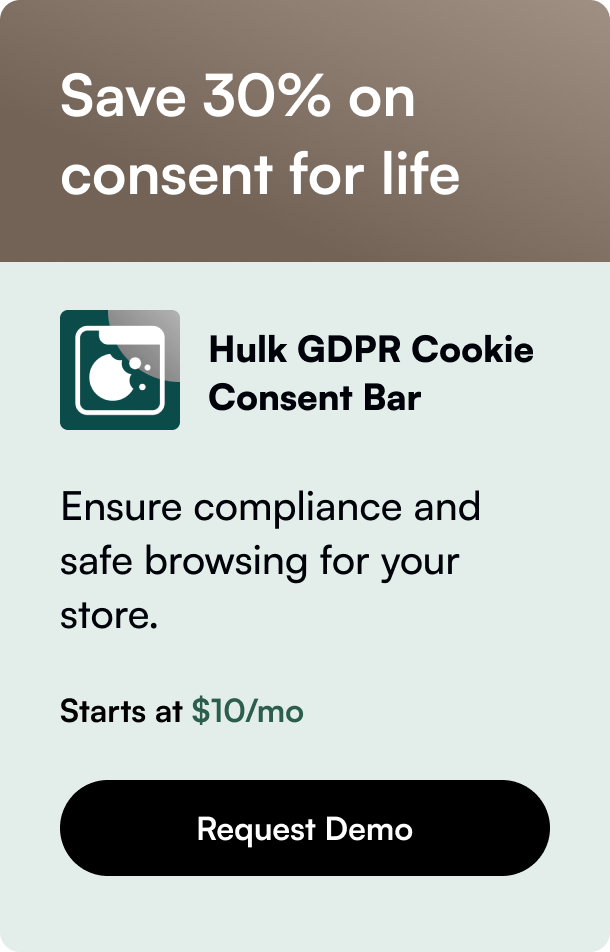Table of Contents
- Introduction
- Changing Your Shopify Store Email Address
- Ensuring Your Email Authenticity
- Troubleshooting Common Issues
- Conclusion
- FAQ Section
In an era where email communication forms the backbone of customer interactions and business notifications, having control over your email settings is non-negotiable. Whether it’s for the purpose of updating your store’s contact details or improving email deliverability, understanding how to change your Shopify email addresses is crucial. This blog post serves as a detailed guide, not only leading you through the steps to update your store and sender email addresses on Shopify but also diving into the technicalities of authenticating your domain to ensure your emails always reach their intended recipients.
Introduction
Imagine this: You've seamlessly transitioned your passion into a thriving online store on Shopify. Orders are rolling in, and customer engagement is at its peak. Everything's perfect, except for one small hiccup—your store's email address is outdated. Or perhaps, your emails to customers are getting lost in the abyss of spam folders. Rings a bell? You're not alone.
In this digital age, where email communication is pivotal, it’s essential to ensure your Shopify store’s email settings are not just up-to-date but optimized for maximum deliverability. From changing your store’s contact and sender email addresses to implementing domain authentication techniques, this blog post will navigate you through maximizing your email efficiency, ensuring every communication reaches its destination as intended.
Whether you're looking to update your email address due to a brand change, or to improve email authenticity to combat spam filters, understanding these processes can significantly impact your operational efficiency and customer satisfaction. Let's explore the intricacies, step-by-step, of streamlining your email communications on Shopify.
Changing Your Shopify Store Email Address
Store Contact Email Address
The store contact email is essentially your main communication line with Shopify and your customers for transactional information. It's the address you provided during your Shopify sign-up process.
Steps to Update:
- Navigate to 'Settings' in your Shopify admin dashboard.
- Click on 'General' to access your store details.
- Under the 'Store details' section, find the 'Email' field to update your store contact email.
- Confirm the change by saving your new settings.
This change ensures all Shopify-related correspondence and product, order, or customer list exports are directed to the new email you specify.
Sender Email Address
Changing the sender email address is crucial for maintaining direct communication with your customers. This is the email address that appears when customers receive automatic notifications, order confirmations, or marketing emails from your store.
Getting Started: Keep in mind that specific platforms like Gmail and Yahoo now require domain authentication (more on this later) for using a personalized sender email. As of a certain date, if unauthenticated, Shopify will automatically adjust your sender email to a default address to ensure continued service.
Steps to Adjust Sender Email:
- In your Shopify admin, go to 'Settings' and select 'Notifications'.
- Under the 'Email' section, you'll find options to edit your sender email.
- Verify the change by clicking on 'Save'.
Utilizing a forwarding address from your domain as your sender email is also a viable option, provided you have access to Shopify's email forwarding service.
Ensuring Your Email Authenticity
To avoid your emails landing in spam folders and ensure they reach your customers, Shopify recommends authenticating your domain. This involves setting up SPF and DKIM records, along with a DMARC policy, which are technical components that prove your emails come from a legitimate source.
Steps for Authentication:
- Check if your store is on an active paid plan, as this is a prerequisite.
- Add the prescribed SPF and DKIM records to your DNS settings within your domain provider's portal.
- Implement a DMARC policy to further validate your emails. This step is not only a recommendation but might become a requirement depending on your email services provider.
Troubleshooting Common Issues
Email Forwarding
If you prefer using a personalized email without direct hosting, Shopify allows email forwarding. This means emails sent to your custom domain can be automatically forwarded to your existing email provider, like Gmail or Outlook.
Shopify Discussions and Community Feedback
Shopify’s forum is ripe with queries and solutions about changing email settings. From official responses to community-powered solutions, exploring the Shopify Community can offer additional insights and troubleshooting tips for managing your email settings effectively.
Conclusion
In summary, refining your Shopify email settings by updating contact and sender addresses and ensuring domain authentication significantly impacts your business’s communication flow. It not only enhances the professionalism but also the reliability of every email sent. Consider this guide your go-to resource for all things email on Shopify, ensuring your messages always hit the mark.
FAQ Section
Q: Can I change my Shopify email address to a non-domain specific address like Gmail or Yahoo? A: As of recent updates for security and authentication purposes, using a generic email like Gmail or Yahoo as your sender address without domain authentication might direct your emails to a default Shopify address. However, you can use such emails for your store contact address.
Q: How long does it take for the domain authentication changes to take effect? A: DNS changes can take up to 24 hours to propagate worldwide, though it is often quicker. It is crucial to monitor your email deliverability closely during this period.
Q: What happens if my custom domain expires or is cancelled? A: If your custom domain is no longer active, you would need to revert to using a Shopify-managed domain or update your settings to a new custom domain to continue using personalized email features.
Q: Can I still use Shopify’s email services if I can't authenticate my domain? A: Shopify provides alternate solutions like forwarding emails or using default email addresses to ensure continuous email communication with your customers. Authenticating your domain is highly recommended for a more branded experience.
Understanding and implementing these email settings are foundational in crafting a memorable, seamless communication pathway between your Shopify store and your customers. Armed with this guide, you’re set to take your Shopify email communications to new heights of efficiency and authenticity.









